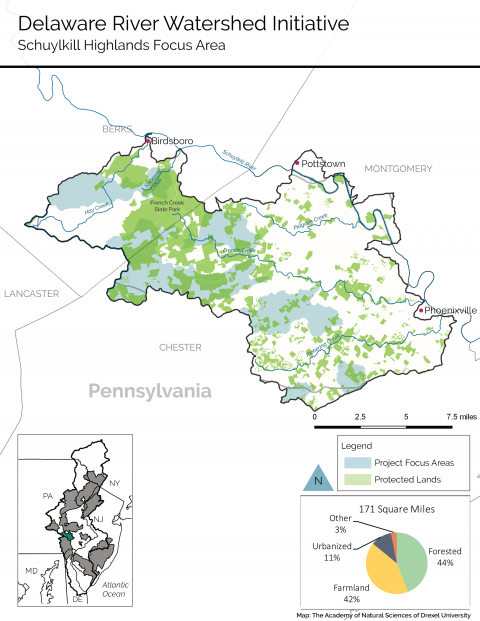These Pennsylvania waterways generally run west to east, from the forested hills of the Hopewell Big Woods area of southern Berks and northern Chester Counties, across a mix of pastoral and suburban landscapes, to the Phoenixville area—where both the French and Pickering Creeks empty into the Schuylkill River. Hay Creek is an exception, running southwest to northeast and emptying directly into the Schuylkill River at Birdsboro.
The Schuylkill Highlands include parts of six municipalities in Berks County and fifteen in Chester County. The cluster is located within the Schuylkill Highlands Conservation Landscape and the Pennsylvania Highlands region. It is part of the federally designated Highlands that stretches from Pennsylvania to Connecticut, encompassing one of the largest areas of intact forests on the East Coast.
Much of the land is wooded or in agriculture. Pennsylvania’s French Creek State Park and the National Park Service’s Hopewell Furnace National Historic Site are both in the heart of the Hopewell Big Woods, along with the Crows Nest Preserve of the Natural Lands Trust and State Game Lands 43. Chester County’s Warwick County Park is located near the lower, eastern edge of the Hopewell Big Woods. There are many other municipal parks throughout the cluster. Birdsboro Authority, the water provider for the borough, owns a 1,200-acre tract just northwest of French Creek State Park that is under a federal “Forest Legacy” conservation easement.


